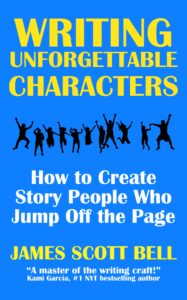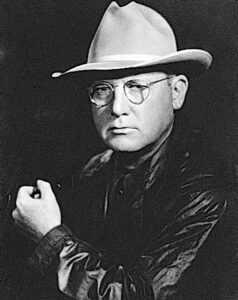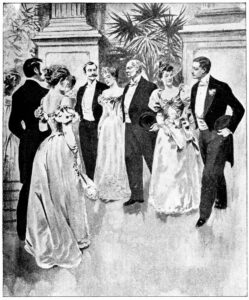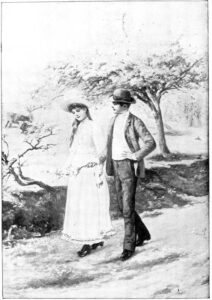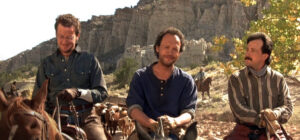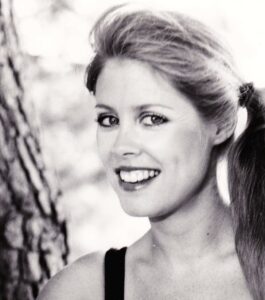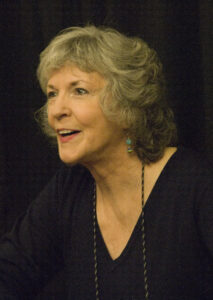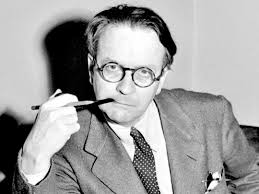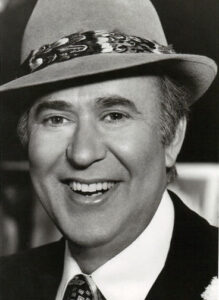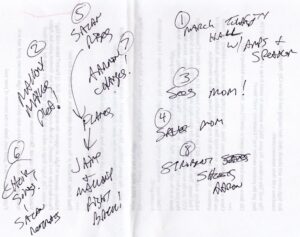by James Scott Bell
@jamesscottbell
We’ve all been there. We’re driving home from a party where we were engaged in robust conversation. Someone said something boneheaded and we thought, That was a boneheaded thing to say. But not wishing to hammer that very obvious nail, we did not reply.
Now, halfway home, it comes to us. The perfect comeback! Witty, wise, pithy. If only we could go back in time! We’d be like the legendary members of the Algonquin round table. (“He and I had an office so tiny, that an inch smaller and it would have been adultery.” – Dorothy Parker.)
There’s an entire Seinfeld episode based on this premise. George is at a Yankees’ board meeting where a platter of shrimp is served. He over-enthusiastically consumes the crustaceans, prompting another board member, Reilly, to remark, “Hey, George. The ocean called. They’re running out of shrimp.” The other members laugh. George can think of nothing to say in return.
Only later does he come up with what he thinks is the perfect comeback. “Oh, yeah? Well, the Jerk Store called, and they’re running out of you!” George’s friends are not impressed and offer alternatives. “No!” George insists. “It’s Jerk Store!”
Now George has to elaborately recreate the encounter. Reilly has since moved to Akron, Ohio to work for Firestone. George sets up an entire meeting there to discuss a Snow Tire Day at Yankee Stadium. He also arranges for a platter of shrimp to be served. He starts stuffing his face, and sure enough, Reilly makes the same crack. George stands and fires his comeback, but is unprepared for the comeback to the comeback.
George: Oh yeah, Reilly? The Jerk Store called, and they’re running out of you!
Reilly: So what? You’re their all-time bestseller!
Leaving George hung out to dry once again.
This fate does not have to befall your characters, for you have the luxury of time and reflection to give them wit on the spot.
Now, let me state up front that wit does not always mean funny. Many times it is, but the real basis of wit is sharpness. It gets the point across crisply, memorably.
For example, in Casablanca Rick (Humphrey Bogart) is talking to Ugarte (Peter Lorre), a low-level schemer. At one point Ugarte says, “You despise me, don’t you?”
Rick says, “If I gave you any thought I probably would.”
That’s sharp, memorable, and perfectly in keeping with Rick’s character.
Which is the key. You don’t want to force wit where it doesn’t belong. It needs to sound like smoothing the character would really say.
Curving the Language
I took a comedy writing class years ago taught by the late Danny Simon. Danny was Neil’s older brother and a veteran of the early days of television. Both Neil and Woody Allen credit Danny Simon with teaching them how to write narrative comedy.
One of Simon’s primary lessons was never to write “joke jokes.” The comedy had to be something the characters would actually say in the moment. So to make a line funny and memorable, he advised “curving the language.”
To do this, you write a line as it comes to you, which is usually in a plain-vanilla sort of way. Then you play with it—you curve it—until it takes on a wittier shape.
I’ll demonstrate with a line from a Lawrence Block short story. Two cops are talking about a suspect who is not exactly lovely to look at. One cop asks the other how ugly is this guy?
Now, the plain-vanilla line could have been, “Really ugly.”
Not very snappy, is it? How about, “God made him really ugly.”
Keep curving. “God made him as ugly as he could.”
Getting there, but not quite. The actual line in the story is:
“God made him as ugly as he could, then hit him in the face with a shovel.”
That’s golden.
As a rule of thumb, try to put one gem of a line in each of the four quadrants of your novel: Act 1, Act 2a, Act 2b, and Act 3. Each time it happens, the character will jump off the page.
So try this in your novel:
- In each act identify several lines of dialogue where your character conveys strong emotion or opinion.
- Curve the language of each line, making them snap and sparkle.
- Check to make sure it doesn’t feel forced, but is in keeping with the character you’ve created. Choose and use the best ones!
Characters who “jump off the page,” who are full and rounded and, at times, unpredictable in what they both say and do, make for a truly memorable reading experience. That’s what makes fans out of readers!
This post is adapted from my new craft book, Writing Unforgettable Characters: How to Create Story People Who Jump Off the Page. It is available in PRINT, as well as KINDLE, KOBO, and NOOK.

